As we move upwards on the evolutionary scale, we forget many basic skills that our ancestors needed for surviving. For example very few of us know how to make a fire without a fire source these days and who in the young generation knows how to can food? Most of our survival instincts are buried deep in our brains as the civilized world develops and we don’t live in the woods anymore. The cities and buildings that we build separate us from nature and all its creatures, making us an easy target in case of a disaster.
[the_ad_placement id=”in-text-1-type-r”]We specified that most of our skills are dormant, as there is one that is still very active even in the world of smartphones and tablets: hunting. These days very few hunt for food, most of us hunt for sport and for activating our basic skills. Hunting is what kept us alive and helped us feed our families as a species over the centuries and thus is deeply wired into our brains. It is also the occupation that will help you the most in case of a global disaster or in case you get lost in the wilderness.
Today we’re going to discuss deer hunting tips and tricks as it is one of the most practiced hunting in North America where the deer population is numerous. According to the area, there are three main types of deer you can find in America:
- The white tail deer, that is usually found east of the Rocky Mountains;
- The mule deer that can be found at the east of the Rocky Mountains;
- The black tail deer that usually lives on the west coast from Northern California to Southeast Alaska.
These are all deer and the main difference between them is in their body mass, color, antler shape, tail, and ears. An experienced hunter knows how to tell a white tail from a black one in a matter of seconds.
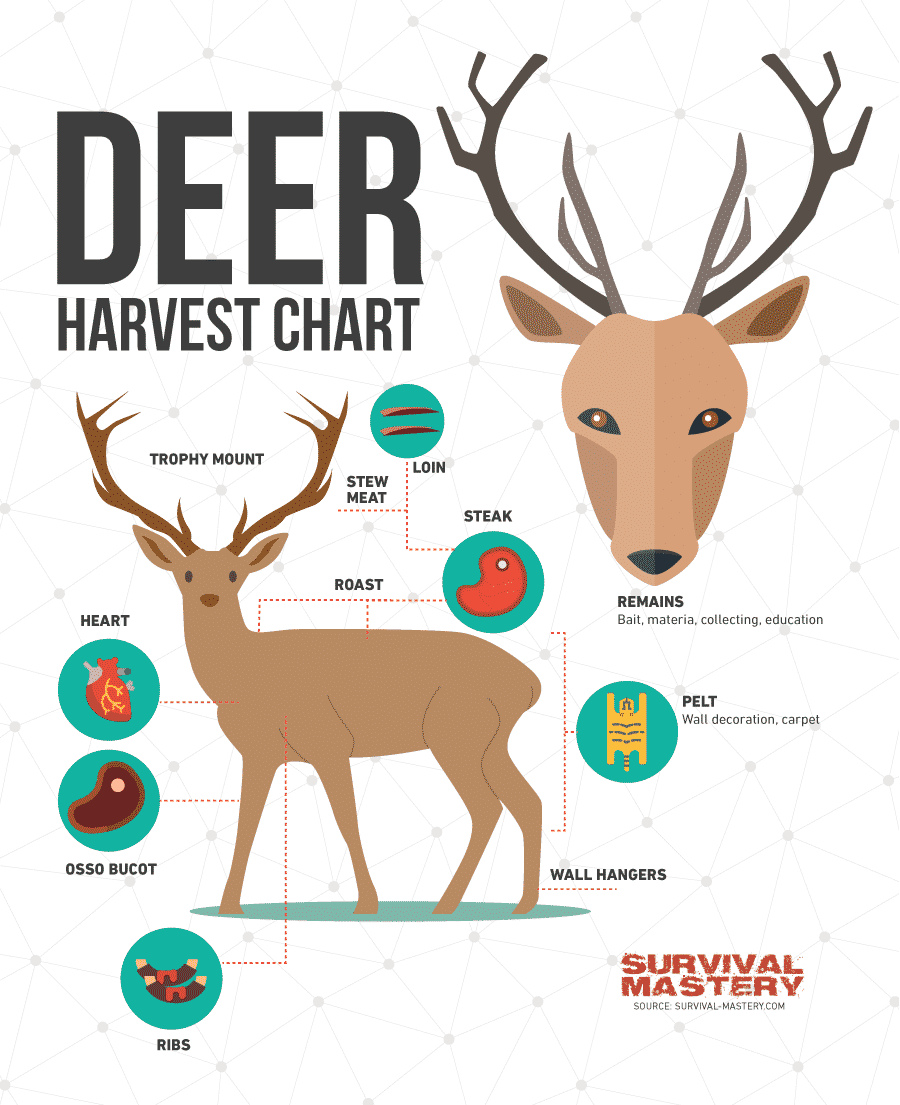
As an enthusiastic beginner in deer hunting you may get a little overwhelmed by the amount of information out there on this particular hunting niche. Also choosing the right weapon and gear can be a bit of a hassle but if the thrill of the hunt is in you, nothing can stop you. Also it is recommended to never go alone on your first hunting trips, it’s better to have an experienced hunter with you. This way you’ll learn a lot of tips and tricks on the spot, things that no one can describe in an article or put in a guide.
Prepare for hunting
Expert hunters like to get prepared out of season so they can have the time to think and consider various options. As a beginner it’s more than recommended to take your time and make advance preparations. If you leave the entire preparation job for the week, or worse, the night before going hunting, you’ll most definitely forget something.
As a beginner you will definitely make mistakes and you’ll probably get laughed at by experienced hunters but don’t worry, they were beginners once too. It’s important to learn from your mistakes and be prepared for anything: you can’t learn all there is about hunting from books and online guides, hands-on experience will always beat the theory. Still, preparation is extremely important regardless of your hunting experience level.
The first step of getting prepared is planning. You need to think about where, when and with whom.
- The “where” makes reference to where you’ll be hunting the following season. It’s important to know the ground and strategically placed hunting points that you can use if you actually want to shoot something and not just take a walk in the woods. It also helps if you spend some time with a good map as they can offer valuable information on the land area and gathering deer places. If you want to take a more modern approach, there are a few great hunting apps that may be of help. If you are interested, take a loot at our hunting apps reviews here.
- The “when” is more about knowing the right conditions and when the season starts so you’d know when to start the preparations. We’ll also talk about weather conditions so keep reading as there is much to learn;
- The “whom” part is about choosing the right hunting partners. As stated before, make sure you have at least one experienced hunter in your team if you are a beginner.
Another important step in the preparation process is buying your deer hunting license (there’s no shooting without that one) and getting yourself up to date with the latest hunting regulations. These steps are important if you don’t want to get a huge fine from the game warden.
Hunting gear preparation
A hunter’s gear is his tool of action, so don’t forget to take care of it. Regardless of the fact that you use a rifle or a bow, you need to make sure everything is in order. Usually the gear can get thorn up during the last hunting season you used it and there may be small defects that you didn’t even know about. It would be a shame to make the trip all the way to the hunting ground and not be able to use your gear.
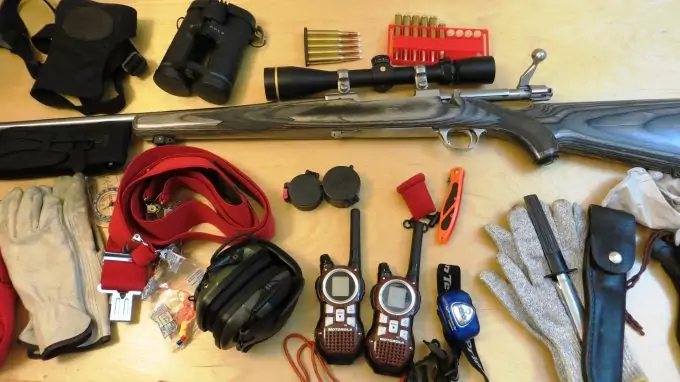
The hunting gear is represented by the multitude of tools, supplies, knowledge and accessories that you’ll be needing so don’t make the mistake to think that only your weapons need preparation and inspecting. One of the more important aspects is represented by the clothes you’ll be wearing. Any hunter knows that without proper camouflage clothes, the experience is definitely going to suffer. So, if you want to make sure you blend in, a suit like the Woodsman Ghillie suit is definitely going to help you out a lot.
To make sure your entire hunting gear is ready for a new season, you’ll have to check the following:
- Weapons – check for loosen strings and problematic arrows if you’re using a bow and make sure your rifle is cleaned and in good condition. Also inspect the market and check out any new weapons that may help you get that big buck this year. We have a great article with reviews and useful information on the best rifle for hunting deer.
- Knowledge – passionate hunters have submissions to all sorts of hunting magazines and specialized online publications to keep them informed on new tips and tricks. If you’re serious about this, you’ll have to do the same. Keep an open eye online and make sure you find out everything that’s new and interesting in the field;
- Supplies – buy enough bullets and arrows and make sure to do so before the hunting season rush begins. As the season gets closer the ammunition is going to get scarce faster;
- Accessories – like camouflage clothing, backpack, knives, coolers, and other supplies. If you buy new clothes make sure you wear them and break them in before the big day. Also don’t forget to sharpen those knives – as a hunter you also have to gut the deer and make sure you leave the place clean after the kill.
Scouting the field and some actual practice
Now that the inside practice is done, you need to get out and continue the practice. After establishing where you’re going to hunt, you also need to get to know the area. First of all, identify the areas where you are allowed to hunt. There are three main types of areas:
- public areas where it is allowed to hunt during season;
- private terrains where you don’t have to ask permission for hunting;
- private areas where the hunting is permitted only with the owner’s agreement.
Of course, there’s a fourth option, when you have your own land in the area and you don’t need to ask permission to anyone. Still, not many of us have this opportunity so you need to start knocking on doors and ask for permission. If you get permission, don’t forget to be polite and send a thank you gift after the hunt. This way you create a long lasting bond with the landowner and he’ll be happy to have you hunting on his land again, next season.
Now it’s a good time to start observing the deer movement either by tracking trails or by installing cameras. This way you’ll know what type of deer you can find here and their favorite pats in the woods. As soon as you get this information, start planning where to place your deer stand. Make sure you have a few back-up places because other hunters may find your favorite spot first.
[the_ad_placement id=”in-text-2-type-r”]As the grand season opening day gets closer you should make sure your hunting skills are not rusty. Go to the shooting range and shoot a few practice rounds or practice your bow and arrow skills in an area where is safe. Practice is very important because during this time you can re-activate that hunting gene in you and detect problems with your weapon and gear. Experienced hunters spend most of their summers in a shooting range to make sure that they’ll do great when it really counts.
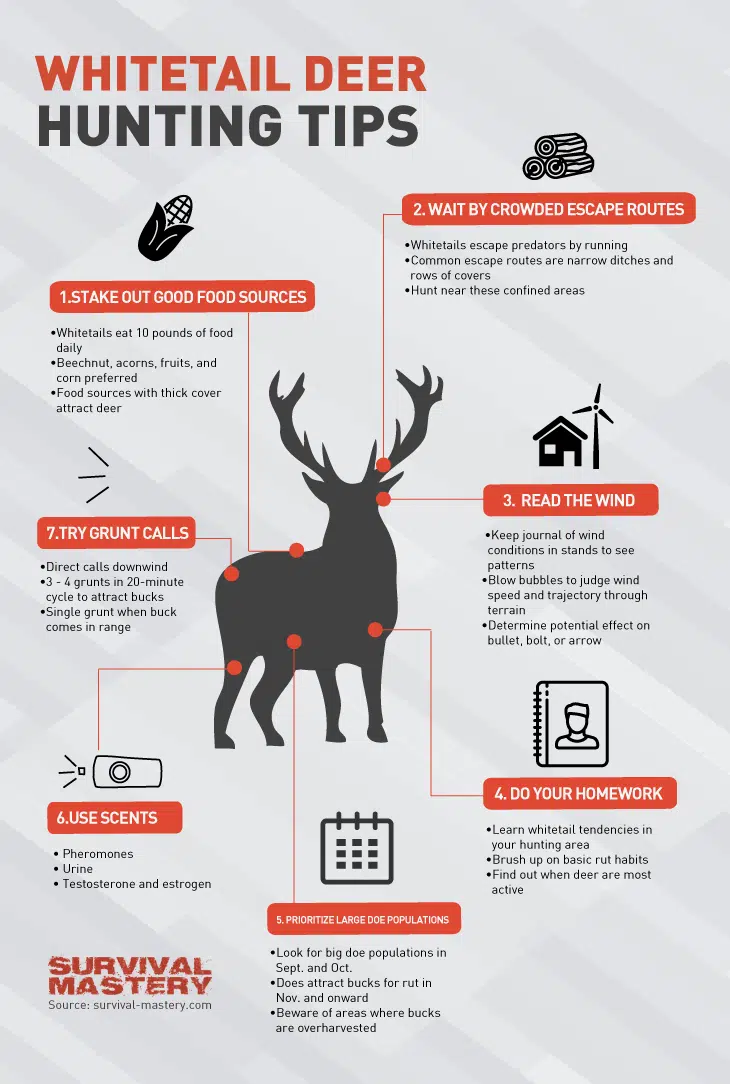
Remember, the more you shoot, the better you get so don’t leave this one out. Take the time to learn how your bullets work and try to learn how to estimate distances by the eye. Also, if you use a bow, learn the trajectory of your arrows and how to shoot them when there’s wind.
Deer hunting safety tips for beginners
When you’re hunting for the first time, it’s extremely important to learn your safety lessons before you go on the field. As you accumulate experience you won’t be so eager to make simple, safety mistakes but for the first hunting incursions you need to learn a few tips and tricks:
- Always make sure to hold the gun with the tip pointed up or in a safe direction. Never keep it pointed at someone or worse, yourself when the gun is loaded! There have been thousands of stupid accidents so it’s best to take your precautions;
- Until proven otherwise, always assume a gun is loaded! If you play around with it thinking it’s not you can actually kill or hurt somebody;
- Put your finger on the trigger only when you’re ready to shoot and sure of your target and what’s beyond the target;
- Never go hunting alone or without a communication device! It’s always recommended to have someone more experienced with you but if you are forced to go alone, make sure to take a phone with you;
- If you’re using a tree stand make sure that it’s well placed and be careful when you go up and down the stand. You can harm yourself pretty bad if you fall from it while holding a firearm or a bow and arrow;
- Wear hunter orange – bright orange can’t be detected by the game and other hunters can spot you easily;
These are the basic safety tips you should follow as a beginner in the art of hunting. If you want to know more and learn better you can take a hunting safety course. Actually, in some areas, these courses are obligatory if you want to get your first hunting license.
When is the right time to hunt deer?
Of course that the right time to go deer hunting is once the season opens but how to increase your odds to actually see and shoot something? Time is a scarce resource these days and every hunter tries to maximize its use as much as possible. So, here are the time periods during the hunting season most likely to make you a successful hunter:
- Deer are crepuscular beings and this means they are most active ad dawn and dusk. So if you live close to the hunting area you can simply take an hour or two in the morning and a few hours after work to unwind.
- If you’re hunting in a highly crowded area (this happens usually on public hunting areas) you can either avoid the crowd by hunting during the week or you can use the crowd and let the other hunters bring the deer to you. During mid season, the deer are already scared and in alert so they won’t be moving as they usually do
- According to some new research, deer are influenced by the Moon phases. Thus, in the nights with new moon deer tend to be on the move until late in the morning and during the non-quarter periods they tend to move mid morning.
If you’re a beginner all these information may seem irrelevant to you but experienced hunters know to appreciate their value. Also, you can find more information in our article on the best time to hunt.
Choosing the right gun for deer hunting
This may be an area where a beginner’s interest is through the roof as choosing the right weapon for this sport can be a bit tricky and difficult. First of all you have to decide what sort of hunter you are; do you like the cold steel of a rifle in your hand and the smell of gun powder or you like the freedom and versatility of a bow?
How to choose the best deer rifle
There are tons of options out there when it comes to hunting with a rifle. The industry is extremely well developed so you can choose which weapon you want and attach all sorts of gears and accessories to it in order to make it better.
The first thing you need to do before choosing a rifle is to study the hunting legislation for the area you are going hunting. In some areas rifles are illegal completely or certain calibers are banned so make sure you can actually use your gun legally.
The second step is choosing the rifle that fits you and the right accessories. To choose the right deer rifle, you need to take a few factors into consideration, like: caliber, size, price, maker, material, and accessories. The caliber is among the most important factors and it must be chosen according to the handler’s experience. As a beginner, you don’t need a big caliber gun as it is going to scare you out of ever hunting again. You need a gun that won’t let you deaf for a few hours and won’t put you on your back with its tremendous recoil.
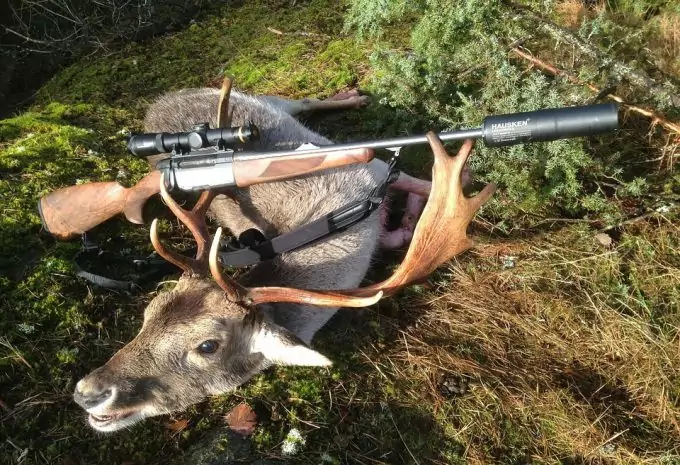
The price is also something to think about as hunting can be a bit of an expensive hobby. Until you find the rifle you like, there’s no need to invest too much money in your weapon. It’s best to invest in useful accessories like a scope. This way you’ll be able to see and hit the target from a safe distance.
Speaking in general, a .243 or .270 caliber will do the trick for a beginner. These calibers are fast, have good range, and they don’t produce as much recoil as a .30-06 or a 7mm mag.
Another thing you need to take into consideration before purchasing your gun is the type of terrain and range of shot. According to this, you might have to take a long or short range shot and the bullet might have to go through various types of vegetation before it reaches its target. For example, if the terrain is covered with heavy brush it is recommended a 30/30 or .35 caliber. The most popular caliber to use longer shots for 100 to 200 yards, in open areas is the old school .30-06 caliber.
Modern rifles are made of composite materials that make them lighter and less prone to rust and erosion so if you’re not set into buying a special type of rifle that you absolutely love and adore, you should take this into consideration.
How to hunt deer with a bow
You may think that deer bow hunting is not that much different than hunting with a rifle, you just aim and shoot. Even though the final result may be the same, hunting with a bow is much more challenging and helps you develop more survival skills. It also helps if you have the right bow for hunting so if you’re still looking, take a look at our reviews and comparisons for the best bow to hunt.
Your first enemy when you bring a bow to a hunting ground is Mother Nature. When you practice at home or in the shooting range, the weather is close to perfect but in the woods there almost always wind and it can rain. In order to beat Mother Nature, you need to practice on all sorts of conditions. Practice when there’s wind, when there’s rain, and even when there’s snow. It’s going to be uncomfortable, I guarantee you, but it’s also going to be rewarding next time when you’re on the hunting ground and you have to face the same conditions.
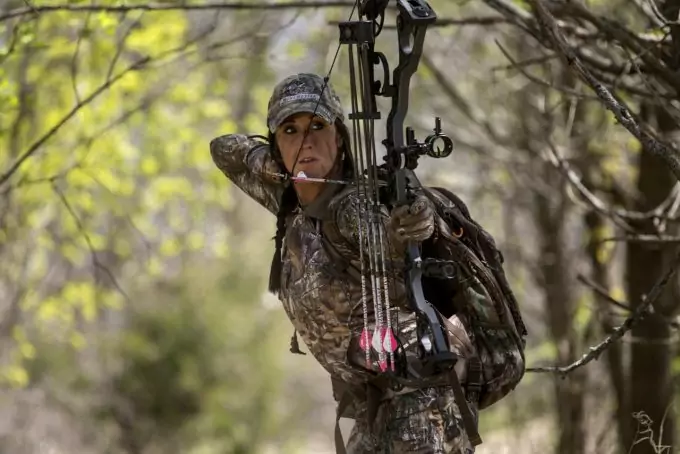
Try to shoot at various distances in order to identify the maximum accurate distance you can shoot at in certain weather conditions. This way you’ll know how close you need to be in order to make a successful shot. As an archer, you need to be able to tell if your shot is going to be a merciful kill for the animal. There’s no point in shooting an arrow if you can’t tell where it’s going to land so don’t try to make lucky shots. If you’re not skilled enough you’ll just wound the deer and he’ll just struggle to die.
You also need to know your equipment and its limitations. There are many ways in which you can improve your gear so make sure you are up to date with the latest techniques and gears on the market. For instance, a bow sight may be of great help. If you’re interested in learning more about features and prices, take a look at our in-depth reviews on the best bow sight.
[the_ad_placement id=”in-text-3-type-r”]There are many things to learn when you go deer hunting with a bow but one thing is sure, if you’re just getting acquainted with the art of archery, you shouldn’t be on the field hunting. Gain some experience and maybe start with small game before going deer hunting.
Tips and tricks to become a better deer hunter
In the end, we compiled a list of useful tips that, we hope, will help you become a better hunter. Remember, it’s never too late to learn new things and you should always try to improve yourself.
- You smell and deer can feel it! The human body emanates a certain scent that puts wild animals on the run as soon as they feel it. In order to help diminish your body’s odor, make sure to shower with scent free soap before you go hunting. Remember, not showering at all before a hunting trip will make your scent stronger.
- Don’t let your hunting clothes get impregnated with all sorts of smells. Keep them in a plastic ziplock bag with dirt and leaves from around your stand in the woods. Put on your clothes only when you’ve reached the hunting ground. This way, your scent will blend in with the natural one.
- Don’t make a lot of noise as deer are alert animals that can be spooked by any unnatural sound. Make sure to leave your car at least 200 yards from your entry route.
- In order to learn the land before the season starts, you’ll need some aerial photos to study. Some hunters like to rent a plane and take the necessary pictures but there’s a cheaper way to get them: Google Maps.
- If you’re using a tree stand, first make sure it’s very well anchored and then make sure it’s very well concealed. Deer have a very agile eye and they can spot you form distance. Also many accidents that happen during hunting are due to the tree stands. People fall off them when leaving or returning to the post.
- Keep your tree stand high so your smell will be carried over the trees so, even if the wind takes towards the deer, they won’t sense it.
- Experienced hunters use calls to lure their pray in their direction. If you’re also using calls but nothing happens, it means you’re using the wrong calls. You should use a doe bleat to arouse a buck’s curiosity, a grunt call during pre-rut periods when bucks are open to challenges, and a buck roar to attract a larger buck during pre-rut period.
- Be patient, a deer is a wary animal and they know that curiosity killed the cat. They will never barge in when you’re making sounds even though the sounds attract them. If you launch a call, wait for about 30 minutes before changing your location.
- Try to make your hunting as comfortable as possible. You’ll be sitting in your spot or stand for hours, trying not to move too much. This is why you should make sure to bring equipment that will ease your waiting hours.
Deer hunting is a complex activity that involves accumulating a big amount of new information and new skills but if you’re passionate it will seem easy. Many people discover this passion late in life so don’t worry if you’re past 30 and the thrill of the hunt just got to you; it’s never too late to start learning new things.
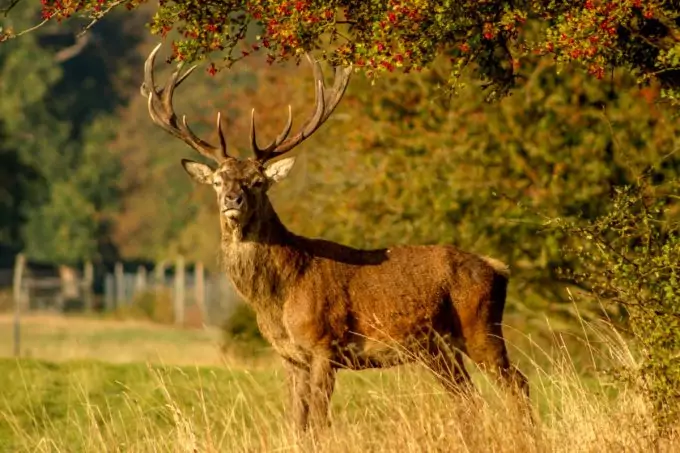
As a hunter, you are responsible for the animals you hunt, and you should make sure each kill is quick and easy. This also means that you have to become better and better, and for this you need to work and study hard. You need to know your limitations and that of your gear in order to know where you have to be in relation to you pray in order to make a successful shot. Regardless of the chosen weapon, you have to master it so the passion can truly be called a sportive activity.

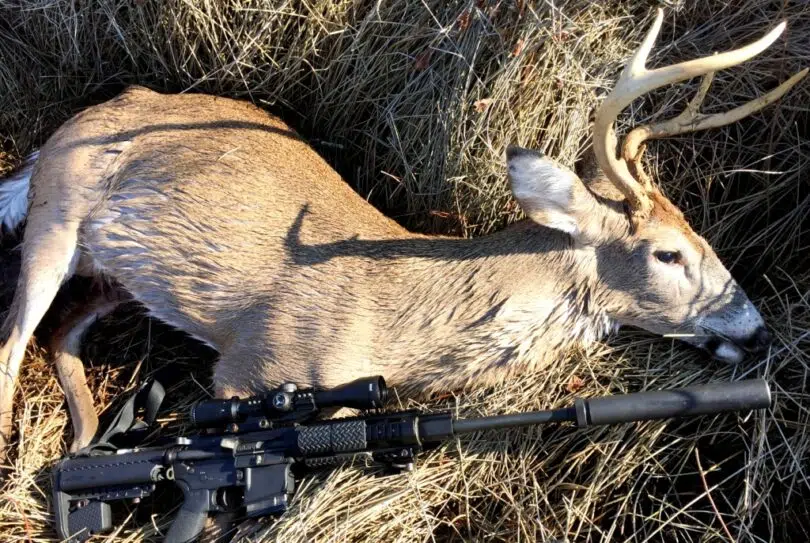
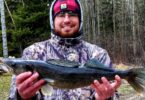
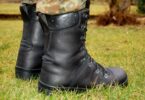

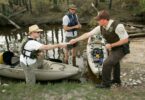
Do these tips here generally work on other big game?
I think the location is the most important element followed by lots of patience. Without this two, you’ll be hunting in the dark.
For me location means knowing where you would position your stand and how you would adjust to the wind. And after that, patience. Lots of it.
I’ve sat on my stand ten times this year, and I’ve seen deer seven times, and shot four. And I think that is what you would call progress.
I love deer hunting! The feeling of bringing down your first buck in what is almost a clean shot gives you a highly awarding feeling. By the way, have you heard of trail cams? Does a trail cam significantly ease deer hunting?
Trail cams are absolutely necessary for deer hunting.